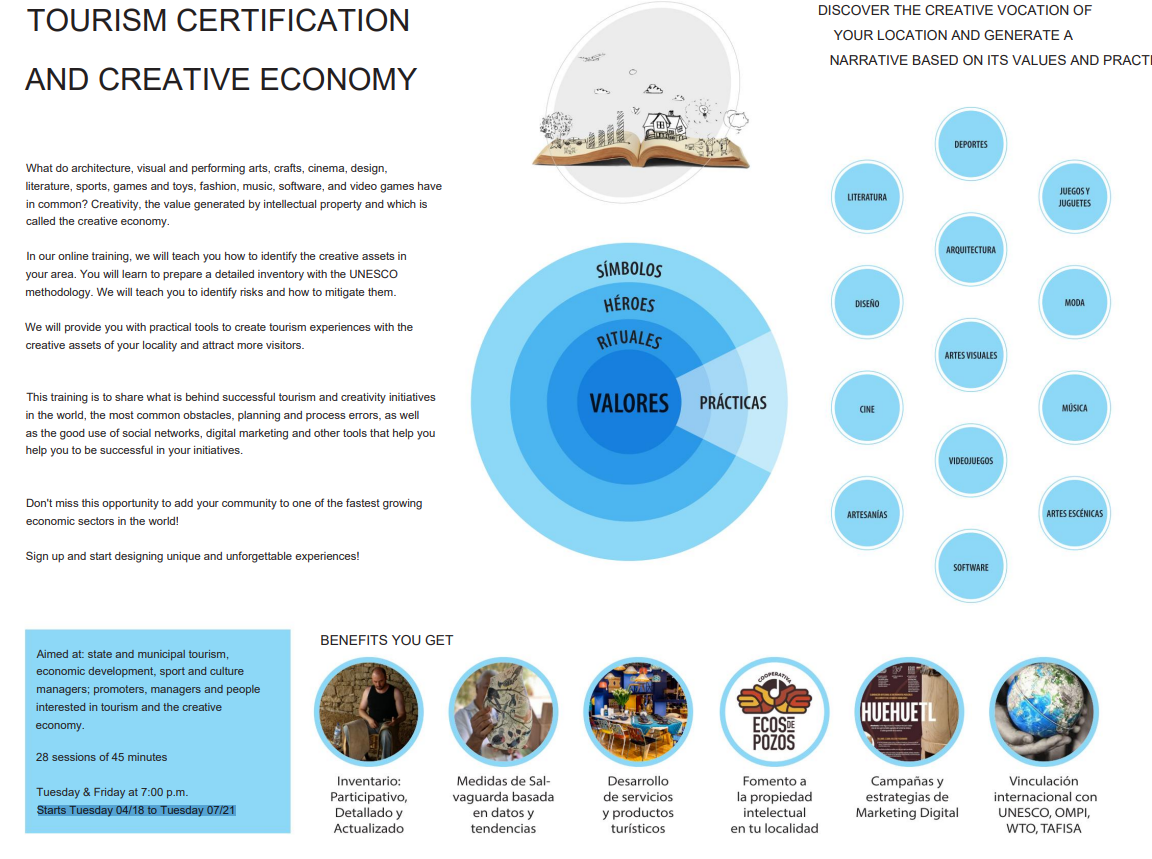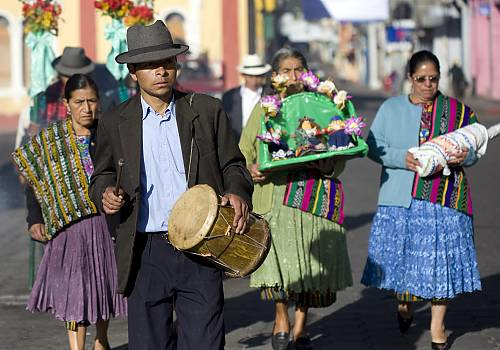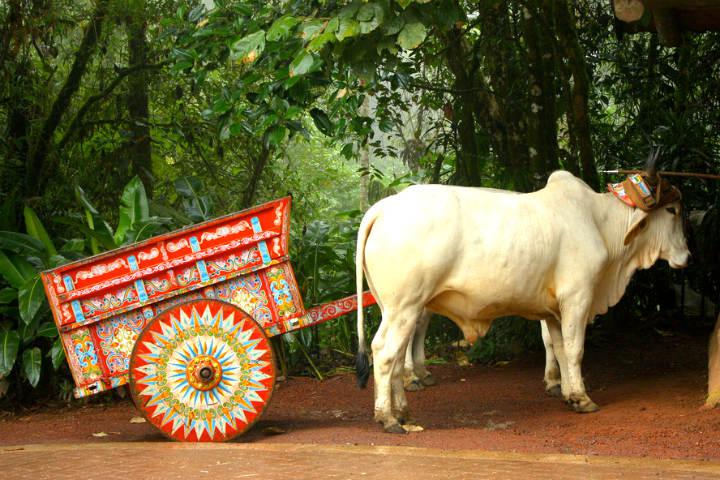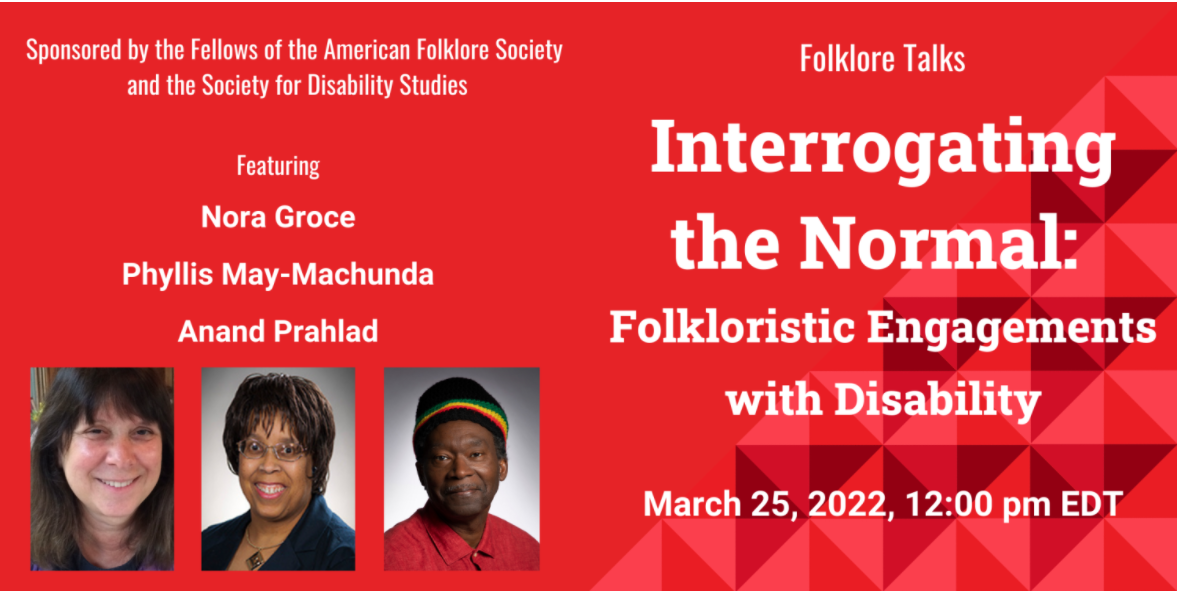EVENT![]()
Kaustinen ICH Seminar 2025
INVENTORIES![]()
IMILIKUT/IMENURU: WAYANA AND APARAI GRAPHIC ART
ICHGRAM![]()
Assosiation of Upper Egypt for Education and Development in the annual meeting of the World Martial Arts Union (WoMAU)
-
EVENTS

CREATIVE TOURISM CERTIFICATION
What do architecture, visual and performing arts have in common, crafts, film, design, literature, literature, sport, games and toys, fashion, music, software, and video games? Creativity, the value generated by intellectual property and called the creative economy.In our online training, we will teach you how to identify the creative assets in your creative assets in your locality.You will learn how to draw up a detailed inventory using the UNESCO methodology. We will teach you how to identify risks and how to mitigate them.We will provide you with practical tools to create tourism experiences experiences with your local creative assets and attract more visitors. more visitors.This training is to share what's behind successful tourism and creativity successful tourism and creativity initiatives around the world, the most common obstacles, planning planning and process mistakes, as well as the good use of social media, digital marketing and of social media, digital marketing and other tools to help you to be
04-03-2023
-
EVENTS
Resources for Scholars in Danger (Ukraine)
The American Folklore Society (AFS) has been working with member Iryna Voloshyna to assist colleagues in Ukraine who request cloud storage for backups of field research materials. We presently have over 50 individuals in Ukraine connected to a secure folder within a dedicated storage drive for this work. We've been working this week to expand our capacity for storage and security needs by working with a group of partners on this effort. If you have colleagues in Ukraine who need our support, they can reach out to us on this page: https://americanfolkloresociety.org/afs-condemns-the-war-in-ukraine-and-stands-with-all-who-oppose-this-violence/.On the page listed above are ways individuals can get involved, including donating money to relief orgs and working with host institutions to house refugees. Scholars at Risk is actively seeking host organizations for scholar placement. https://www.scholarsatrisk.org/get-involved-institutions/Some of our partners in our fieldwork backup storage work are at the Ukrainian A
03-14-2022
-
EVENTS
The Fellows of the American Folklore Society webinar, “Interrogating the Normal: Folkloristic Engagements with Disability,”
Folklore and Disability Webinar - March 15th The Fellows of the American Folklore Society will present a webinar, “Interrogating the Normal: Folkloristic Engagements with Disability,” on March 25, 2022, 12:00–2:00 pm EDT. This free webinar is the first in a series of three webinars on the topic of “Interrogating the Normal” and is part of a continuation of the Folklore Talks webinars presented by the AFS Fellows.Folklore opens new vistas for understanding what counts as normal. Studies of disability by folklorists are especially provocative for their critiques of ableism, challenging concepts of cultural competence.Phyllis May-Machunda (Professor Emerita of American Multicultural Studies at Minnesota State University Moorhead) will discuss her experiences as a parent of a child with a disability/illness through the lens of a folklorist and will consider intersections among folklore and disability.Nora Groce (the Cheshire Chair at University College London (UCL)) will consider folklore and disability as import
02-24-2022
-
INVENTORIES

2020 JIAPICH Finalist- NGO Impacto of Mexico
07-07-2021
-
INVENTORIES

The Nan Pa’ch ceremony of Guatemala
05-07-2019
-
INVENTORIES

Symbol of Costa Rican Hardwork: Las Carretas
02-28-2019
 PREV
PREV- …
- …
- NEXT


.PNG)
